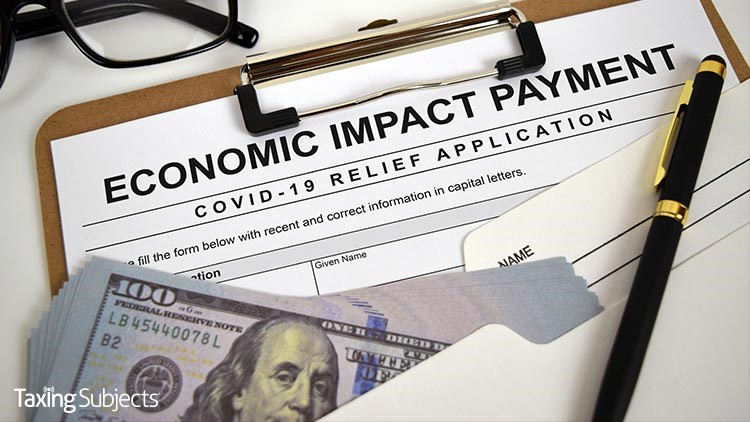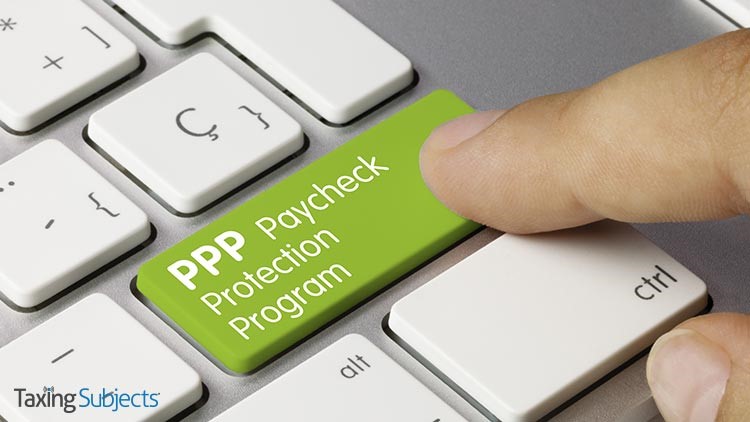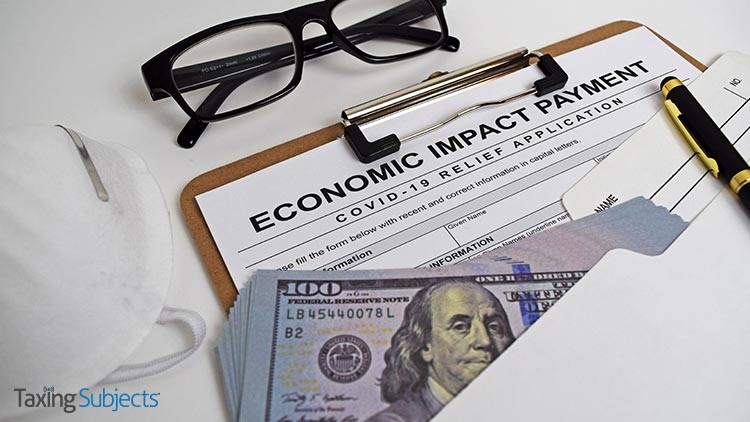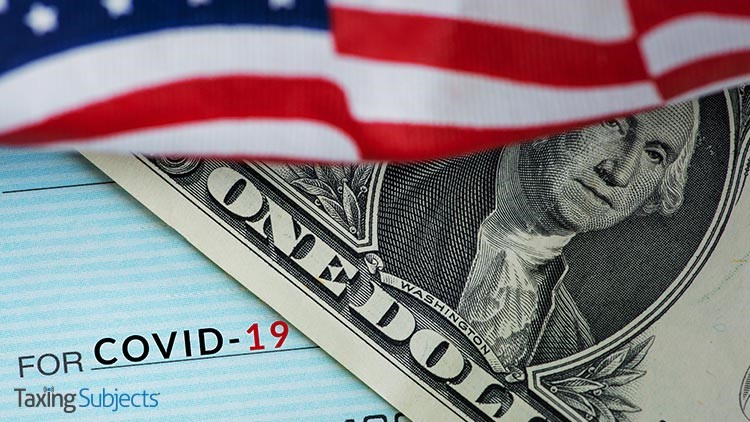by | May 20, 2020 | Tax Tips and News
The Internal Revenue Service says it is in the process of hiring 3,500 additional telephone representatives so that taxpayers can get answers to their questions about Economic Impact Payments.
The agency’s regular telephone assistance and other services are still limited due to the COVID-19 pandemic.
The IRS says answers for most common questions about EIPs are available on IRS.gov and are updated regularly. Answers are also available to taxpayers who got a letter from the IRS informing them of their payments, known as Notice 1444.
Those who call the phone number in the letter can get an automated system where commonly asked questions are addressed; callers will also have the option to speak to a human representative.
Accounting Today magazine reports there may be a lot of taxpayers who have a lot of questions.
The IRS says it sent out more than 130 million of the 150 million payments were sent out in the first four weeks of the program as of May 8. However, it wasn’t without its problems.
Accounting Today’s Michael Cohn writes that the IRS relied on direct deposit data from 2018 and 2019 income tax returns when it was available. But there’s a hitch. Many bank accounts, Cohn writes, were only temporary accounts, set up by tax preparation chains for doing fund transfers; there was no record of the taxpayers real bank account.
In those cases, taxpayers were asked online to enter their own account information for a direct deposit, but many of them are still waiting on payments.
Paper checks have had their own issues. The IRS has only recently begun sending out paper checks and in some cases, the agency didn’t have the most current addresses for the recipients. As a result, some payments were sent to deceased taxpayers and taxpayers living out of the country. They’ve been asked to return the payments to the IRS.
Most of the IRS workforce has been working remotely because of the pandemic. In the meantime, a mountain of paper correspondence has been piling up in trailers outside IRS offices. Recently the agency recalled some workers to start processing the paper backlog.
Now employees are being called back to answer phones—and questions from worried taxpayers about their payments. The IRS says it expects to bring back more telephone representatives as state and local restrictions allow.
– Story provided by TaxingSubjects.com
by | May 19, 2020 | Tax Tips and News
The IRS wants help spreading the word about Economic Impact Payments.
The Internal Revenue Service is continuing its full-court press to spread information about Economic Impact Payments to as many Americans as possible. Since the agency wants to provide information to everyone affected by EIPs—from those waiting on their automatically issued checks to non-filers who still need to provide qualifying information—it recently published an information packet for partner organizations that includes messaging in English and Spanish.
What’s in the IRS “Economic Impact Payments: Partner and Promotional Materials” packet?
In the announcement, IRS Commissioner Chuck Rettig said spreading information about EIPs is a priority for the agency. By supplying the “Economic Impact Payments: Partner and Promotional Materials” packet to “thousands of partners across the country,” they hope to “[reach] organizations representing hundreds of millions of taxpayers”—maximizing the effectiveness of the campaign.
The IRS said the packet includes a number of digital and physical materials:
- IRS e-posters and Twitter images that can be used on websites, social media, newsletters, and other platforms.
- Print materials include Tax Tips, short, plain English summaries of EIP, and “Ready to Use” articles that can be shared with family, friends, partners and clients in emails, newsletters and web sites.
The currently available articles address topics like frequently asked questions, where to find the Non-Filers: Enter Payment Info Here tool, common coronavirus-related scams, and how to sign up for IRS social-media alerts. As part of this outreach, the IRS will continue to produce social media posts for Twitter, Facebook, Instagram, and YouTube.
In addition to including private members of the tax industry in its EIP-outreach efforts, the IRS release noted that taxpayers should also check the Federal Deposit Insurance Corporation and Consumer Financial Protection Bureau websites for additional information. While the FDIC can “help people without bank accounts obtain an Economic Impact Payment,” the CFPB “has produced several videos related to Economic Impact Payments and other COVID-19 information.”
Source: IR-2020-96
– Story provided by TaxingSubjects.com
by | May 19, 2020 | Tax Tips and News
The Small Business Administration recently announced that the loan-forgiveness application for the Paycheck Protection Program (PPP) is now available for business owners who applied for and received a PPP loan.
According to the SBA press release announcing the loan-forgiveness application, “the form and instructions inform borrowers how to apply for forgiveness of their PPP loans, consistent with the Coronavirus Aid, Relief, and Economic Security Act (CARES Act).” The SBA also noted that it will provide more guidance for PPP borrowers and lenders at a later date.
What is the Paycheck Protection Program?
The CARES Act established the Paycheck Protection Program loan to prevent small businesses from needing to lay off employees due to coronavirus-related difficulties, like state-enforced restaurant closures. The SBA website says the loan will be forgiven “if all employees are kept on the payroll for eight weeks and the money is used for payroll, rent, mortgage interest, or utilities.”
To begin the PPP loan application process, follow the Find a Lender link on the “Paycheck Protection Program Loan Information” page.
How do I apply for PPP loan forgiveness?
Small business owners who want to apply for PPP loan forgiveness need to complete the Paycheck Protection Program Loan Forgiveness Application on SBA.gov. Simply download, complete, and submit the fillable PDF version of the application on SBA.gov, which includes a two-page, line-by-line set of instructions for calculating eligible payroll and non-payroll costs.
Source: SBA Release 20-41
– Story provided by TaxingSubjects.com
by | May 14, 2020 | Tax Tips and News
How many Economic Impact Payments have been issued?
Many Economic Impact Payment reporting deadlines are now fixed in the country’s rear-view mirror, and millions of Americans have started receiving payments from the US Treasury Department. That begs the question: Just how many people have received a CARES Act-authorized payment? The answer is found in a recent Internal Revenue Service press release that breaks down the figures by state.
The IRS announced that close to 130 million taxpayers have now received an Economic Impact Payment—up from the 88 million toward the end of April—bringing the total amount of money issued to more than $200 billion.
The five states that have received the most money in payments are California ($22 billion), Texas ($18 billion), Florida ($15 billion), New York ($12 billion), and Pennsylvania ($8 billion). South Dakota, North Dakota, Arkansas, Vermont, and Wyoming round out the bottom of the list, collectively receiving $2.5 billion dollars.
It’s worth noting that the IRS included taxpayers from the District of Columbia and those with foreign addresses in the final count. As of May 8, the agency said that 252,095 DC residents and 595,548 foreign address holding filers have received an EIP.
Will the Treasury issue more Economic Impact Payments?
While the IRS reminded Americans that those who recently filed a tax return and certain recipients of government benefits will have their EIP issued automatically, some non-filers may still need to provide the IRS with qualifying information to receive a payment.
“For those who don’t receive federal benefits and didn’t have a filing obligation in 2018 or 2019, the IRS continues to encourage them to visit the Non-Filer tool at IRS.gov so they can quickly register for Economic Impact Payments,” the IRS urged. “People can continue to receive their payment throughout the year.”
The IRS closed the release with a link to the Economic Impact Payments FAQ page, which answers common questions like the following:
- “Who is eligible?”
- “Who is not eligible?”
- “How much is it worth?”
- “Do I need to take action?”
To view current EIP statistics for all 50 states, visit IRS.gov.
Source: IR-2020-91
– Story provided by TaxingSubjects.com
by | May 12, 2020 | Tax Tips and News
The US Treasury Department has found a loophole in the stimulus payments sent out to individuals. Some of the recipients were actually deceased—and Treasury wants that money back.
Accounting Today magazine reports the government became aware in April when some people noticed that family members who had recently died still got the $1,200 Economic Impact Payments.
The federal government updates taxpayer rolls regularly, incorporating new data with death certificate information, but the magazine said the IRS was relying on data to process the payments that had been gathered as long ago as 2018.
The stimulus payments—$1,200 for each adult earning up to $75,000 and an additional $500 for each child under age 17—began showing up in bank accounts in April. Tens of millions of checks remain to be distributed.
When the program was announced, the IRS said those who received more money than they were due because of changes in income would not have to return the difference. It’s not known if those who fail to return dead relatives’ payments to the government would face legal action.
Accounting Today says the IRS and Treasury are planning to issue their guidance on the mistaken payments in a few days.
– Story provided by TaxingSubjects.com
by | May 9, 2020 | Tax Tips and News
The Internal Revenue Service is reminding employers who have been impacted by the Coronavirus pandemic that three new credits are available for them.
The first of these, the Employee Retention Credit, is intended to encourage businesses to keep employees on the payroll. The ERC is a refundable tax credit of 50% up to $10,000 in wages paid by an eligible employer whose business has been financially affected by COVID-19.
The credits available to all employers, regardless of size, and includes tax-exempt organizations. The IRS says there are only two exceptions to this credit: State and local governments and their instrumentalities, and small businesses who take small-business loans.
What are the qualifications for employers?
There are only two qualifications and employers have to meet one or the other:
- The employer’s business is fully or partially suspended by government order due to COVID-19 during the calendar quarter.
- The employer’s gross receipts are below 50% of the comparable quarter in 2019. Once the employer’s gross receipts go above 80% of a comparable quarter in 2019, they no longer qualify after the end of that quarter.
Employers will calculate these measures each calendar quarter.
What are the paid sick leave and family leave credits?
The paid sick leave credit is aimed at giving businesses a tax credit for an employee who is unable to work (including working from home) because of Coronavirus quarantine or self-quarantine. It also applies if the employee has Coronavirus symptoms and is seeking a medical diagnosis.
Those employees are entitled to paid sick leave for up to 10 days (up to 80 hours) at the employee’s regular rate of pay up to $511 per day and $5,110 in total.
Employees are also entitled to paid family and medical leave amounting to two-thirds of the employee’s regular pay, up to $200 per day and $10,000 in total. Up to 10 weeks of qualifying leave can be counted toward the family leave credit.
Businesses can be reimbursed immediately for the credit by reducing their required deposits of payroll taxes that have been withheld by the amount of the credit.
Eligible employers can immediately get a credit in the full amount of the required sick leave and family leave—plus related health plan expenses and the employer’s share of Medicare tax on the leave—for the period of April 1, 2020, through Dec. 31, 2020. The refundable credit is is applied against employment taxes on wages paid to all employees.
How do businesses get the Employee Retention Credit?
The IRS says getting the credit is as simple as reducing the required deposits of payroll taxes that have been withheld from workers’ wages. The reduction is made by the amount of the credit.
An IRS release has further details: “Eligible employers will report their total qualified wages and the related health insurance costs for each quarter on their quarterly employment tax returns or Form 941 beginning with the second quarter. If the employer’s employment tax deposits are not sufficient to cover the credit, the employer may receive an advance payment from the IRS by filing Form 7200, Advance Payment of Employer Credits Due to COVID-19.”
For more information about these credits, check out Employee Retention Credit FAQs and Paid Family Leave and Sick Leave FAQs, or the IRS fact sheet on the Employee Retention Credit.
– Story provided by TaxingSubjects.com






